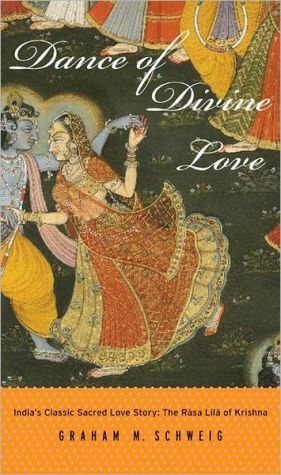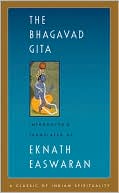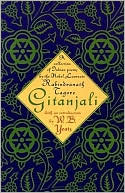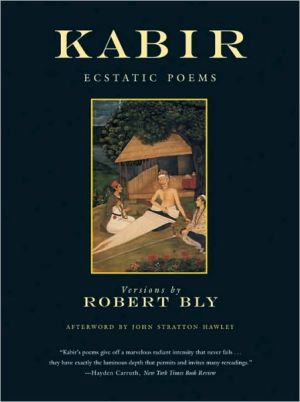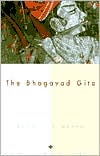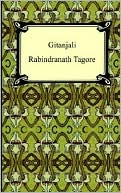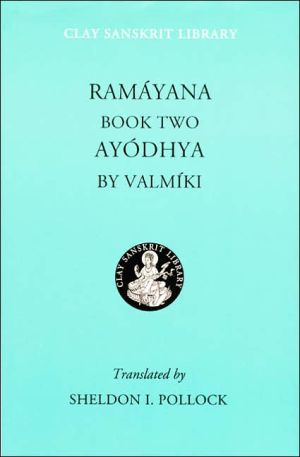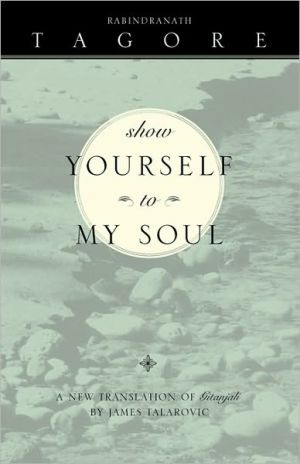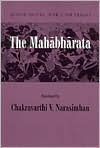Dance of Divine Love: India's Classic Sacred Love Story: The Rasa Lila of Krishna
The heart of this book is a dramatic love poem, the Rasa Lila, which is the ultimate focal point of one of the most treasured Sanskrit texts of India, the Bhagavata Purana. Judged a literary masterpiece by Indian and Western scholars alike, this work of poetic genius and soaring religious vision is one of the world's greatest sacred love stories and, as Graham Schweig clearly demonstrates, should be regarded as India's Song of Songs. The story presents the supreme deity as the youthful and...
Search in google:
"This is truly first-rate scholarship. The five-chapter dramatic poem of the Rasa Lila is a gem of world literature, and Schweig has polished it masterfully. His translation gives a sense of the poetic aspect of the work as well as its theology."--E. F. Bryant, Rutgers University"Schweig's translation is accurate, expressive, and poetic. This book will be useful to classes in a variety of disciplines, including world literature, Eastern religions, and comparative art and culture."--June McDaniel, College of Charleston"A comprehensive presentation of the Rasa Lila chapters from the Bhagavata Purana has been much awaited, and this volume by Dr. Graham Schweig will surely satisfy scholars and aesthetes alike. Dr. Schweig's knowledgeable mind has danced well with his sensitive heart to produce a great accomplishment."--Acharya Shrivatsa Goswami, Radha Raman Temple, Vrindavana, India and author of Celebrating KrishnaFrederick M. Smith - Religious Studies ReviewScholars of Vaisnavism will be pleased by this volume and its singular focus.
Dance of Divine Love\ India's Classic Sacred Love Store: The Rasa Lila of Krishna \ \ By Graham M. Schweig \ Princeton University Press\ Copyright © 2005 Princeton University Press\ All right reserved.\ ISBN: 978-0-691-11446-0 \ \ \ Introduction\ The Sacred Love Story \ Dance of Divine Love presents India's classical sacred love story known as the Rasa Lila. It is a dramatic poem about young maidens joining with their ideal beloved to perform the wondrous "circle dance of love," or Rasa. Its story is an expression of the eternal soul's loving union with the supreme deity in "divine play," or Lila. The Rasa Lila is considered the ultimate message of one of India's most treasured scriptures, the Bhagavata Purana.\ The narrator of this story tells us that the highest devotional love for God is attained when hearing or reciting the Rasa Lila. Undeniably, its charming poetic imagery, combined with deeply resonating devotional motifs, expresses to any reader much about the nature of love. Narrated in eloquently rich and flowing Sanskrit verse, it has been recognized as one of the most beautiful love poems ever written.\ A DRAMA OF LOVE\ The Rasa Lila is set in a sacred realm of enchantment in the land known as Vraja, far beyond the universe, within the highest domain of the heavenly world. This sacred realm also imprints itself onto part of ourworld as the earthly Vraja, a rural area known as Vraja Mandala ("the circular area of Vraja") in northern India, about eighty miles south of the modern capital city of Delhi. Vraja is described as a land of idyllic natural beauty, filled with abundant foliage heavy with fruit and bloom, roaming cows, and brightly colored birds singing melodiously. The Rasa Lila takes place in the earthly Vraja during the bountiful autumn season, when evenings abound with soothing scents and gentle river breezes. The following is a summary of the five chapters of the Rasa Lila story from the Bhagavata's tenth book.\ One special evening, the rising moon reached its fullness with a resplendent glow. Its reddish rays lit up the forest as night-blooming lotus flowers began to unfold. The forest during those nights was decorated profusely with delicate starlike jasmine flowers, resembling the flowing dark hair of goddesses adorned with flower blossoms. So rapturous was this setting that the supreme Lord himself, as Krishna, the eternally youthful cowherd, was compelled to play captivating music on his flute. Moved by this beauteous scene, Krishna was inspired toward love.\ Upon hearing the alluring flute music, the cowherd maidens, known as the Gopis, who were already in love with Krishna, abruptly left their homes, families, and domestic duties. They ran off to join him in the moonlit forest. Krishna and the Gopis met and played on the banks of the Yamuna River. When the maidens became proud of his loving attention, however, their beloved Lord suddenly vanished from their sight. The Gopis searched everywhere for Krishna. Discovering that he had run off with one special maiden, they soon found that she too had been deserted by him. As darkness engulfed the forest, the cowherd maidens gave up their search, singing sweet songs of hope and despair, longing for his return. Then Krishna cleverly reappeared and spoke to them on the nature of love.\ The story culminates in the commencement of the Rasa dance. The Gopis link arms together, forming a great circle. By divine arrangement, Krishna dances with every cowherd maiden at once, yet each one thinks she is dancing with him alone. Supreme love has now reached its perfect fulfillment and expression through joyous dancing and singing long into the night, in the divine circle of the Rasa. Retiring from the vigorous dancing, Krishna and the Gopis refresh themselves by bathing in the river. Then, reluctantly, the cowherd maidens return to their homes.\ A first reading of the story might lead one to believe that an obsessive love and passion for Krishna consumed the cowherd maidens. Their love could appear selfish and irresponsible, perhaps even unethical, as they abandoned their children, husbands, families, and homes. A closer reading, however, reveals the idealized vision of the story intended by its author and embraced and expounded upon by various traditions, in which the passionate love of the Gopis becomes the model, even the veritable symbol, of the highest, most intense devotion to God.\ Contrary interpretations may arise because the vision of God presented herein is intimate, esoteric, and complex, containing elements that are familiar to both Western and Indic religious traditions, as well as those that are unfamiliar. Certainly, one can observe how Krishna is acknowledged within the text as being a sovereign deity-a God of grace who teaches and redeems devoted souls, and who possesses other mighty and divine attributes, characteristics one would expect to find in the divinity of Semitic traditions. But there is a unique vision presented in this dramatic poem-a vision of the inner life of the deity. Here, God is celebrated as an adorable, eternally youthful cowherd boy who plays the flute and delights in amorous dalliance with his dearest devotees.\ In Indic traditions, the attainment of God is commonly believed to be achieved through asceticism and renunciation. Yet such an unyielding, self-imposed renunciation for personal spiritual gain is not favored in the Bhagavata Purana, thus contrasting with the greater tradition out of which it arises. Rather, the text promotes renunciation that is naturally occurring and selflessly generated, spontaneously arising out of love. The cowherd maidens are considered to have achieved the perfection of all asceticism and to have attained the highest transcendence simply through their love and passionate devotion to God. This method of attainment is clearly distinct from the rigorous asceticism and ceaseless search for world-denying transcendence for which much of religious India is known.\ Even though the divinely erotic tenor of the Rasa Lila story has delighted many, it has confused others. Some Western and even Indian interpreters have assumed that the love exhibited between the cowherd women and their beloved Krishna is nothing more than a display of worldly lust. The author's intention expressed in the text, however, is quite the contrary-the hearing or reciting of this story, he proclaims, will free souls from lust, the "disease of the heart." Therefore saintly voices from particular traditions within the Hindu complex of religion claim that its erotic imagery is an expression of the intensity and intimacy of divine love, rather than a portrayal of worldly passion. It is only a lack of enculturation and purity of heart on the part of the reader that prevents one from appreciating the Rasa Lila as the greatest revelation of love.\ Such traditions tell us that the true interpretation of the story requires a certain type of vision, the "eye of pure love," prema-netra, which sees a world permeated by supreme love constantly celebrated by all beings and all of life. This eye beholds a realm of consummate beauty and bliss, in which both the soul and intimate deity lose themselves in the eternal play of love. Prema-netra is said to be attained when the "eye of devotion" is anointed with the "mystical ointment of love," an ointment that grants a specific vision of the "incomprehensible qualities of the essential form of Krishna." These traditions claim that such qualities are revealed through the Rasa Lila text, which, with its sensuous spirituality and innocent playfulness set in alluring poetic verse, ever beckons and attracts souls to enter into its drama.\ This is the vision of saints, which I myself do not claim to possess. As one who is Western-born and trained in the academic study of religion, having had the privilege of living in India among saintly practitioners and participating with them in devotional practices, however, I am perhaps in a position to present this work to those both outside and within these traditions. My intention is to illuminate a particular tradition's special vision of such an important text, thereby facilitating further dialogue with other world traditions of theistic mysticism.\ This work, then, explores a vision of intimacy with the supreme deity as presented by the Rasa Lila text and elaborated upon by recognized sages possessing this eye of love. The translation of the story, found at the heart of the book, is intended to be literal and faithful, striving to capture some of the exquisite poetic beauty and profound theological expression of the original. Within the introductory and commentarial sections that frame the translation, deeper or more hidden meanings of its verses are presented through general discussion and specific verse comments. It is hoped that these key teachings and traditional commentaries, from one of the most influential traditions interpreting the text, will enrich the reading of this masterpiece of world literature and enhance its appreciation.\ SACRED LOVE STORIES\ Among all love stories of the world, only a few are considered divine revelation. Certain mystical traditions honor a particular love story as their ultimate vision of supreme love. These stories exhibit erotic longings, often in the feminine voice, as can be observed in the following similar expressions of passion presented in two very different scriptural texts, the first biblical and the second puranic: "Let him kiss me with the kisses of his mouth!" (Song of Solomon 1.2), and "Please bestow upon us the nectar of your lips!" (Rasa Lila 3.14). These explicitly romantic expressions have been perceived as the voice of the soul in its passionate yearning for the divine. Devout mystics and saintly persons have shown, through their own elaborate worship and interpretation of these stories, that the desire to love God intimately and passionately lies deeply within the human heart. These special stories can thus be called sacred love stories.\ God as the divine lover is not as foreign to us in the West as perhaps we might assume. According to a sociological study conducted several years ago, a surprising 45 percent of Americans can "imagine God as a lover." Intimate love of the deity, therefore, is apparently neither remote nor uncommon, nor is it seen as existing only in the past among people of different cultures and distant places. That its presence is concealed may be due to the confidential nature of the experience of intimacy in relation to the sacred; perhaps the phenomenon is preserved at an understated and private level of human religious experience. Though it would be impossible to determine the pervasiveness of this religious phenomenon, or the type and depth of experience, it is clear that humans throughout the ages have desired intimacy with the divine.\ Sacred love stories, in many ways, appear to present the passionate love shared between a lover and a beloved. They disclose explicit conceptions or allegorical depictions of a transcendent realm of love, in which a supreme deity and affectionate counterpart-either a devout soul or divine personage-join together in various phases of amorous, even erotic intimacy. The purest and highest attainable love associated with these stories occurs only when the recipient of the soul's exclusive devotion is the supreme Beloved. Such stories have inspired the human heart to reach for superlative and pure expressions of love. It is not surprising that generations of religious writers, in numerous works, have developed and embellished essential themes drawn directly from these sacred stories.\ In the Western world, the biblical book Song of Solomon, also known as the Song of Songs, relating the passionate love between a king and queen, has been regarded by many as a sacred love story. This story has become foundational for various forms of Jewish mysticism, such as the Kabbalah. The rich and erotic words of the Song reveal the union of lover and beloved who symbolize, for these traditions, the divine "queen" and "king" within the godhead. Additionally, the Song of Solomon has been a profound source of inspiration for Catholic love mysticism and Christian piety in general. The feminine and masculine voices of the text have represented the loving relationship between the soul and God, respectively, in which the soul becomes the "bride" and Christ the divine "bridegroom."\ Similarly, traditions of Islamic love mysticism have drawn upon an ancient Arabic tale that allegorizes the soul's capacity to be utterly intoxicated with love for God. The story of Layla and Majnun describes Majnun's uncontainable madness of affection for his beloved Layla, from early boyhood throughout his life, and even beyond life. Although there has never been complete agreement on the sacred value or degree of holiness of these particular love stories, often because of the explicit sensuality and erotic imagery of their content, there is no doubt that powerful traditions of love mysticism have based their religious visions on such texts. Sacred love stories are indeed stories of romance and passion, but they are often seen as much more than that. They are regarded by many as sacred expressions of the innermost self that can lift the human spirit into the highest realms of intimacy with the deity.\ INDIA'S SONG OF SONGS\ The love poem of the Rasa Lila could easily be regarded as the "Song of Songs" of ancient India. Several Vaishnava sects-those traditions within the Hindu complex of religion whose worship is centered upon the supreme deity Vishnu, also known as Krishna-single out the story of the Rasa Lila, claiming it to be the essence of all lilas. As the Song of Solomon has been elevated to the highest status above all other biblical books by many Jewish and Christian mystics, and thus has become known as the "Song of Songs," the Rasa Lila also has been honored as the "essence of all lilas" and the "crown-jewel of all acts of God" by several Vaishnava traditions, for which it functions as the ultimate revelation of divine love.\ The enchanting Rasa Lila has had great influence on the culture and religion of India, perhaps even more than the Song of Songs has had on the Western world. For over a thousand years, poets and dramatists have continually told its story, often creating new stories that expand upon particular themes of the Rasa Lila. Artists and dancers from a variety of classical Indian schools have attempted to capture the beauty and excitement of various events within the story through pictorial renderings and interpretative dance performances. In modern times, in the West and in India, literary and artistic creations continue to be generated directly from this great work. The passionate love of the Gopis for their beloved Lord Krishna has epitomized sacred love in Indian civilization, and to this day provides the richest source of poetic and religious inspiration for Hindu love mysticism.\ Another Sanskrit love poem, the Gita Govinda or "Song of Govinda," by Jayadeva, has been referred to as the song of songs of India by some Indian and Western scholars. This twelfth-century work concerning Govinda, who is Krishna, and his most beloved Gopi, Radha, presents a tempting parallel to the Song because of the singular hero and heroine between whom a passionate love tale ensues. By contrast, the Rasa Lila portrays a group of heroines, though there is special attention given in one chapter to a favored Gopi, who is assumed by some Vaishnava sects to be Radha. Furthermore, the Rasa Lila does not reach the erotic intensity of the Gita Govinda and the Song of Songs. Whereas the general tone of the Rasa Lila is more amorous or romantic, the overall tone of both the Song and Jayadeva's work is considerably more sensuous, if not explicitly or metaphorically sexual.\ Despite these similarities of Jayadeva's work to the biblical song, the Rasa Lila deserves recognition as India's song of songs in light of its literary-historical and scriptural parallels. Historically, the Gita Govinda appears centuries later than the Bhagavata. In fact, the Rasa Lila is referred to repeatedly in a refrain within the second part of Jayadeva's story (vv. 2-9). Similarly, the Song of Solomon functions as the source of much literary activity, as we find with the Spanish mystic poet, John of the Cross, who himself derived direct inspiration from the Song for his poetry describing the spiritual marriage of the soul and Christ.\ (Continues...)\ \ \ \ \ Excerpted from Dance of Divine Love by Graham M. Schweig Copyright © 2005 by Princeton University Press. Excerpted by permission.\ All rights reserved. No part of this excerpt may be reproduced or reprinted without permission in writing from the publisher.\ Excerpts are provided by Dial-A-Book Inc. solely for the personal use of visitors to this web site. \ \
List of Figures and Tables ix Foreword by Norvin Hein xi Acknowledgments xvii Pronunciation xxi Abbreviations xxvIntroduction: The Sacred Love Story 1 A Drama of Love 1 Sacred Love Stories 6 India's Song of Songs 8 Bh gavata as the Ultimate Scripture 11 Sacred Context of the Rasa Lila 16Part I: Poems from the Bhagavata Purana Dance of Divine Love: Rasa Lila 23 Act One. Krishna Attracts the Gop s and Disappears 25 Act Two. The Gop s Search for Krishna 39 Act Three. The Song of the Gopis: Gopi Gita 51 Act Four. Krishna Reappears and Speaks of Love 58 Act Five. The Rasa Dance 65Song of the Flute: Venu Gita 78 Song of the Black Bee: Bhramara Gita 86Part II: Textual Illuminations Chapter 1: Background of the Text 97 Devotional Love as "Rasa" 97 Ancient Sources of Devotional Love 101 Devotional Love as the Path to God 105 Forms of the Deity Vishnu 108Chapter 2: Aspects of the Story 111 Framing Passages of the Rasa Lila 111 Poetic and Dramatic Dimensions 114 Krishna: Lord of Love and Beauty 117 Vraja: Pastoral Paradise 125 Yogamaya :Potency for Intimacy 130 The Gopis: Beloveds of Krishna 137 The Special Gopi :Radha 147Chapter 3: Messages of the Text 152 Devotional Yoga Transcends Death 152 Ethical Boundaries and Boundless Love 158 The Vision of Devotional Love 166 Symbolism in the Rasa Lila 172Part III: Notes and Comments Introduction 187 Act One 189 Act Two 222 Act Three 237 Act Four 250 Act Five 263Part IV: The Sanskrit Text Introduction 291 Act One 293 Act Two 304 Act Three 313 Act Four 318 Act Five 322Appendix 1: Note on Translation 331 Appendix 2: Poetic Meters in Sanskrit Text 336 Accent and Syllable Length: Emphasis and Rhythm in Sanskrit Verse 337 Sanskrit Meters Used in R sa L l Te x t 337 Story Line and Poetic Meter Analysis 339 Verse Number Variations and Actual Verse Count 342 Appendix 3: Synoptic Analysis of the Rasa Lila 344Glossary 347 Bibliography 355 Index 367
\ Journal of Vaishnava StudiesThis is the most complete presentation of the Rasa Lila, focusing on the text and story itself and looking at it, as it requires, from each of its many viewpoints. The scholarship and teaching quality are first-rate. . . . Schweig's approach is inclusive, consciously reaching out to all levels of reader/devotee/connoisseur and clearly wishing not to leave anyone behind. . . . [E]veryone interested in Hinduism, literature, and religion should consider buying this book.\ \ \ \ \ Altar Magazine - Joel Bordeaux\ A fascinating study and eloquent translation of the beloved story of the all-attractive god Krishna's nocturnal dalliances with the cowherder women of Vraja as described in the Bhagavata Purana. . . . Schweig render[s] this Sanskrit classic into elegant English.\ \ \ Yoga and VaishnavismThis book is an event-for Vaishnavas and everyone else. Long awaited by insiders, it will be a grace to outsiders, too. . . . [E]veryone interested in Hinduism, literature, and religion should consider buying this boo—especially those who incline to mystical love religion and its literature.\ \ \ \ \ Religious Studies ReviewScholars of Vaisnavism will be pleased by this volume and its singular focus.\ \ \ \ \ es D. Redington\ This is the most complete presentation of the Rasa Lila, focusing on the text and story itself and looking at it, as it requires, from each of its many viewpoints. The scholarship and teaching quality are first-rate. . . . Schweig's approach is inclusive, consciously reaching out to all levels of reader/devotee/connoisseur and clearly wishing not to leave anyone behind. . . . [E]veryone interested in Hinduism, literature, and religion should consider buying this book.\ \ \ \ \ Altar MagazineA fascinating study and eloquent translation of the beloved story of the all-attractive god Krishna's nocturnal dalliances with the cowherder women of Vraja as described in the Bhagavata Purana. . . . Schweig render[s] this Sanskrit classic into elegant English.\ — Joel Bordeaux\ \ \ \ \ Yoga and VaishnavismThis book is an event-for Vaishnavas and everyone else. Long awaited by insiders, it will be a grace to outsiders, too. . . . [E]veryone interested in Hinduism, literature, and religion should consider buying this boo—especially those who incline to mystical love religion and its literature.\ — James D. Redington, Jr.\ \ \ \ \ Religious Studies ReviewScholars of Vaisnavism will be pleased by this volume and its singular focus.\ — Frederick M. Smith\ \ \ \ \ Religious Studies Review\ Scholars of Vaisnavism will be pleased by this volume and its singular focus.\ — Frederick M. Smith\ \ \ \ \ Altar Magazine\ A fascinating study and eloquent translation of the beloved story of the all-attractive god Krishna's nocturnal dalliances with the cowherder women of Vraja as described in the Bhagavata Purana. . . . Schweig render[s] this Sanskrit classic into elegant English.\ — Joel Bordeaux\ \ \ \ \ Yoga and Vaishnavism\ This book is an event-for Vaishnavas and everyone else. Long awaited by insiders, it will be a grace to outsiders, too. . . . [E]veryone interested in Hinduism, literature, and religion should consider buying this boo--especially those who incline to mystical love religion and its literature.\ — James D. Redington, Jr.\ \
